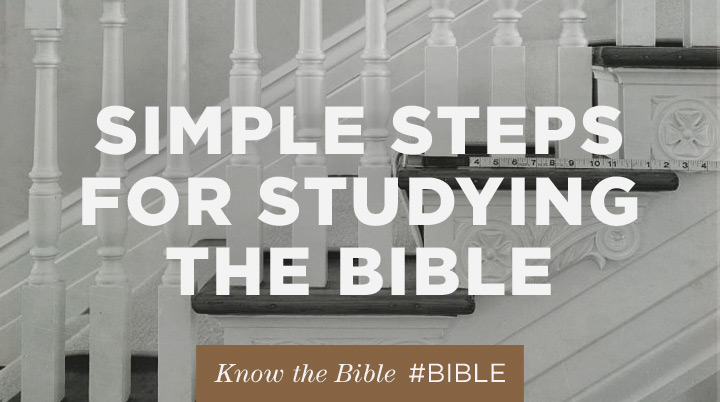Latest
-
Objections to the Christian Faith from the Unchurched and De-Churched
 Tue Dec 02, 2014
Tue Dec 02, 2014
by Resurgence -
Craig Groeschel: We Innovate for Jesus
 Tue Oct 14, 2014
Tue Oct 14, 2014
by Resurgence -
Mark Driscoll: Revelation
 Tue Oct 07, 2014
Tue Oct 07, 2014
by Resurgence -
RESURGENCE LEADERSHIP #034: JOHN PIPER, WHY I TRUST THE SCRIPTURES, PART 2
 Tue Sep 30, 2014
Tue Sep 30, 2014
by Resurgence -
Resurgence Leadership #033: John Piper, Why I Trust the Scriptures, Part 1
 Tue Sep 23, 2014
Tue Sep 23, 2014
by Resurgence

Archives
3 simple steps for studying the Bible

There are many methods of studying the Bible, but the key is to choose one and stick with it. Here Pastor Dave offers a simple three-step plan for digging into Scripture and applying it to your life.
It’s critical for a Christian to be a man or woman of the Bible.
As we grow in our relationship with Jesus, we should also grow in our grasp and understanding of Scripture. Since I became a Christian, there’s nothing that has been more beneficial to my relationship with Jesus than spending time in the Bible. Personally, I like to read through the whole Bible every year. I also like tackling individual books and letters included in Scripture for more in-depth study. I consider them to be uncharted territory. I approach them like an explorer trying to become familiar with a new land.
There are many different ways we can study the Bible. The important thing is to find one that works best and use it often. Here is a simple process I have used myself and shared often with others. If you currently are not studying the Bible, I hope you find this method helpful.
The 30,000-foot flyover
Pick a book of the Bible and read it all the way through in one sitting. Do this five times, preferably five days in a row. Picture a plane flying 30,000 feet over mountains in order to get a general idea of what the book of the Bible you are studying is about. This is ideal for short books. If you want to study a longer book, like Isaiah or Jeremiah, it’s still important to set enough time aside to read the whole book through in one sitting.
Boots on the ground
This is where we really dig into the book. It’s like walking through canyons and exploring meadows. We want to really dig deep here and learn the terrain. After we’ve got the big idea of the book or letter in view, go paragraph-by-paragraph, writing a single descriptive sentence for each paragraph.
There’s nothing that has been more beneficial to my relationship with Jesus than spending time in the Bible.
The single sentence should be made up of a subject and a complement. The subject is the biggest idea in the passage while the complement is what the text says about that big idea. For the bigger books of the Bible, the single sentence can be for each chapter, instead of a paragraph. As we begin to look for connected themes between paragraphs, an outline appears.
Creating a map
Now that we’ve been walking through the terrain and know it a little better, we need to create a map. The last step is to write a summary statement that captures the big idea of the whole book. This single sentence should also have a subject and a complement. As you complete one book and move on to the other, you can keep a file of all the summaries you created to review for your personal growth or when others have questions about certain texts.
I hope this method works for you. If it doesn’t, I recommend finding something you can do consistently that will enable you to dig deep into God’s Word one book at a time.